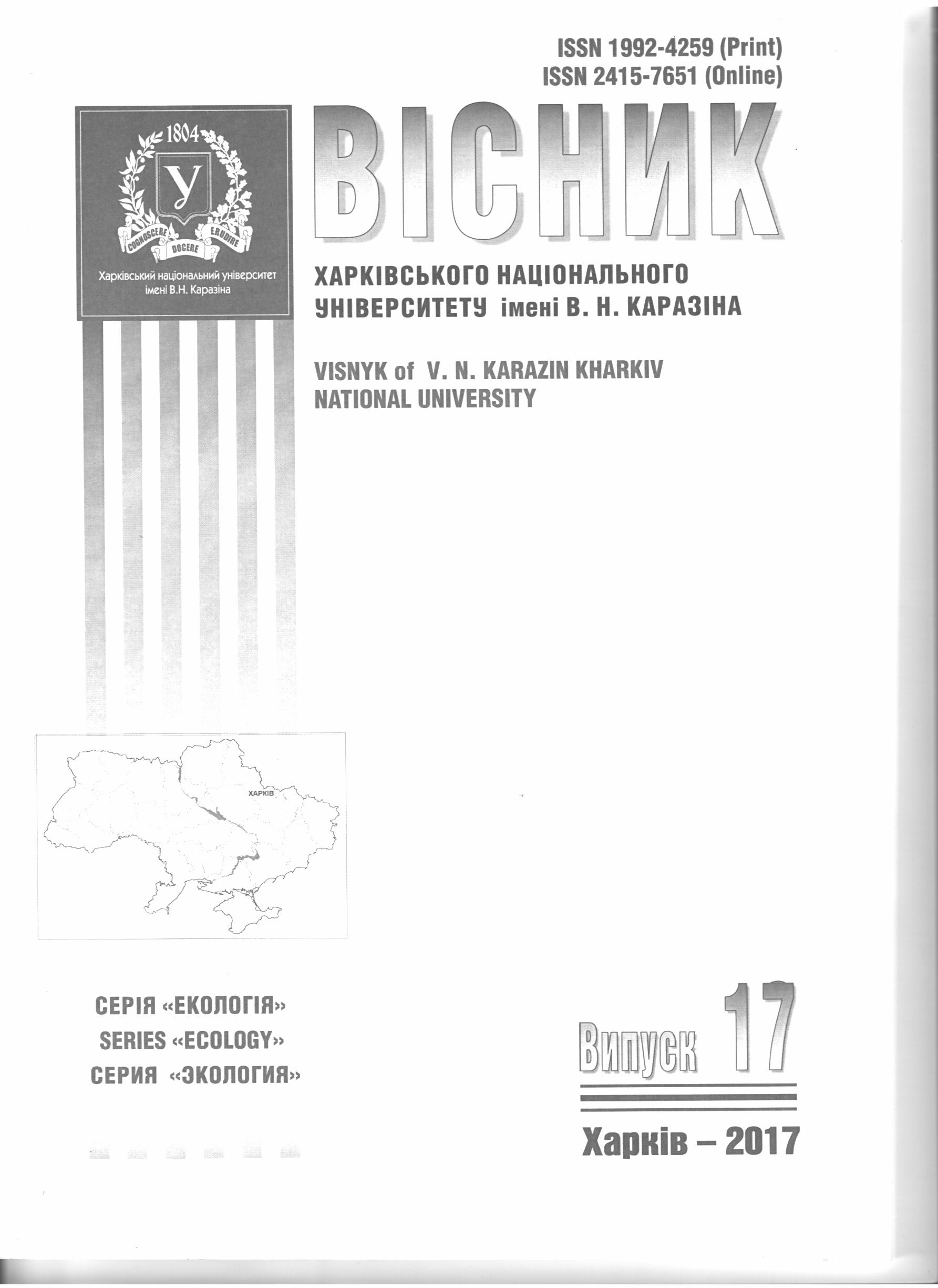Модель побудови поля радіаційного фону
Анотація
Мета. Розробка нової регресійної моделі для побудови поля радіаційного фону. Методи. Експериментальні за допомогою дозиметра МКС-25 «ТЕРРА»; регресійний аналіз. Результати. Розроблено регресійну модель побудови поля радіаційного фону на місцевості за довжиною ломаної лінії, яка послідовно з’єднує усі відсортовані за зростанням потужності дози контрольні точки вимірювань, при цьому довільну точку зони з'єднують з попередньою до найближчої до неї контрольною точкою і цю сумарну відстань вздовж ламаної підставляють до рівняння регресії. Висновки. Модель дозволяє надійно будувати карту радіаційних забруднень на всій контрольованій території на підставі результатів локальних вимірювань в певній кількості контрольних точок. Модель може знайти застосування для моніторингу інших видів забруднень.
Завантаження
Посилання
2. Некос В. Ю. , Пеліхатий М. М., Юшманова І. П. Методи і алгоритми визначення радіаційного стану довкілля . Людина і довкілля. Проблеми неоекології. № 12 (1112). 2008.. С. 90 – 98.
3. Василенко Г. И., Тараторин А. М. Восстановление изображений. М. : Радио и связь, 1986. 304 с.
4. Некос В. Е, Гетманец О. М., Пелихатый Н. М., Чуенко А. В., Дроздов А. А., Кривицкая И. А.. Алгоритмы радиационного мониторинга местности в режиме реального времени. Людина і довкілля. Проблеми неоекології. № 2 (13). 2009. С. 7 – 13.
5. Гетманець О. М., Гордієнко В. Г., Дроздов О. О., Пеліхатий М. М. Патент України на корисну модель № 50154. МКВ G01T1/167. Спосіб радіаційного моніторингу місцевості у режимі реального часу. заявл. 11.12.2009; опубл. 25.05.2010. Бюл. № 10. – 4 с.
6. Гетманец О. М. , Пелихатый Н. М., Дроздов А. А., Некос В. Е., Кучеров К. И. Радиационный мониторинг контролируемой территории в режиме реального времени. Людина і довкілля. Проблеми неоекології. 2010. № 2 (15). С. 3 – 33.
7. Гетманець О. М., Гордієнко В. Г., Дроздов О. О., Пеліхатий М. М.Патент України на корисну модель № 56883. МКВ G01T1/167. Спосіб радіаційного моніторингу реальної місцевості з реальним рельєфом. заявл. 23.07.2010; опубл. 25.01.2011. Бюл. № 2. – 6 с.
8. Гетманец О. М. , Гордиенко В. Г., Дроздов А. А., Пелихатый Н. М. Радиационный мониторинг местности в режиме реального времени при помощи волоконно-оптического дозиметра. Вісник ХНУ ім. В. Н. Каразіна. Серія: Екологія. 2011. № 944. Вип.6. С. 83 – 86.
9. Гетманец О. М. , Дроздов А. А., Дурасова Н. С., Пелихатый Н. М. Радиационный мониторинг местности (вблизи поселка Коропово в июне 2011 года). Людина і довкілля. Проблеми неоекології. 2012. № 3–4. С. 110 – 115.
10. Гетманець О. М., Гордієнко В. Г., Дроздов О. О., Пеліхатий М. М.; Патент України на корисну модель № 62252. МКВ G01T1/167. Спосіб радіаційного моніторингу реальної місцевості у режимы реального часу за допомогою волоконно-оптичного дозиметра. заявл. 18.12.2010; опубл. 25.08.2011. Бюл. № 16. 4 с.
11. Ємець В. М., Пеліхатий М. М., Гетманець О. М. Патент України на корисну модель № 84133. МКВ G01W 1/00,G08C 17/02. Система автоматичного моніторингу території. заявл. 15.04.2013; опубл. 10.10.2013. Бюл. № 19. – 5 с.
12. Гетманец О. М., Пелихатый Н. М. Разработка алгоритма построения поля радиационного фона. Вісник ХНУ ім. В. Н. Каразіна. Серія: Екологія. 2016. Вип. 14. С. 41 – 45.
Автори, які публікуються у цьому журналі, погоджуються з наступними умовами:
- Автори залишають за собою право на авторство своєї роботи та передають журналу право першої публікації цієї роботи на умовах ліцензії Creative Commons Attribution License 4.0 International (CC BY 4.0), котра дозволяє іншим особам вільно розповсюджувати опубліковану роботу з обов'язковим посиланням на авторів оригінальної роботи та першу публікацію роботи у цьому журналі.
- Автори мають право укладати самостійні додаткові угоди щодо неексклюзивного розповсюдження роботи у тому вигляді, в якому вона була опублікована цим журналом (наприклад, розміщувати роботу в електронному сховищі установи або публікувати у складі монографії), за умови збереження посилання на першу публікацію роботи у цьому журналі.
- Політика журналу дозволяє і заохочує розміщення авторами в мережі Інтернет (наприклад, у сховищах установ або на особистих веб-сайтах) рукопису роботи, як до подання цього рукопису до редакції, так і під час його редакційного опрацювання, оскільки це сприяє виникненню продуктивної наукової дискусії та позитивно позначається на оперативності та динаміці цитування опублікованої роботи (див. The Effect of Open Access).





